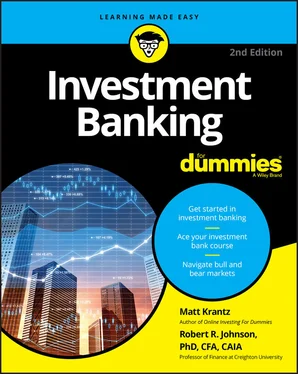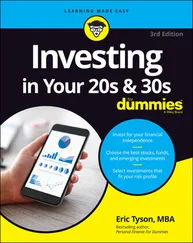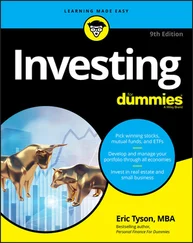Venture capitalists or other private investors want to cash out. Venture capitalists often buy companies with the idea that they’ll sell them once they get big enough to attract public investors. The IPO is a way for venture capitalists to cash in on their investment, so they can put that money into another small company. Private investors, such as private-equity firms, also urge companies to sell shares to the public so they can cash in.
Bonds are too expensive. Young companies can sell bonds to raise money. But bond investors are a nervous lot, and they tend to demand high rates of return on companies that don’t have a long-term, proven track record. Borrowing this way, especially for relatively unproven companies, can often be prohibitively expensive. Also, bonds must be repaid with interest. A young company may be reluctant to sign up for a deal that requires it to make routine interest payments when its cash flow may be uncertain.
After companies exhaust their normal avenues for raising money, that’s when IPOs come into play. IPOs are a way for companies to get investment capital from investors, who want to be owners. These owners are happy to get a piece of the company and don’t even require a routine payment of cash.
 Don’t think that conducting an IPO is free. Those investment bankers need to eat, too, right? IPOs do have costs, which typically involves hiring a team of investment bankers to put together all the necessary documents to appease investors and put on meetings with investors, called roadshows. You can read about the importance of the roadshow, to whet investors’ appetites for the stock in Chapter 2. In this section, you find out about all the moving parts investment bankers may watch when selling a company’s stock to the public for the first time.
Don’t think that conducting an IPO is free. Those investment bankers need to eat, too, right? IPOs do have costs, which typically involves hiring a team of investment bankers to put together all the necessary documents to appease investors and put on meetings with investors, called roadshows. You can read about the importance of the roadshow, to whet investors’ appetites for the stock in Chapter 2. In this section, you find out about all the moving parts investment bankers may watch when selling a company’s stock to the public for the first time.
Meeting the requirements to make an IPO happen
Investment bankers can concoct just about any financial product out of thin air. And some of these products indeed make investors’ money go poof (as you find out in Chapter 19). But IPOs aren’t created out of nothing. An IPO at its core requires a willing company that’s looking to raise money by selling part of itself to willing investors.
And for an IPO to be successful — in that it attracts ample investors to pay a healthy price for the stock — the bar is even higher. A few characteristics of a company that is often a prime candidate for a successful IPO includes being in the following:
An industry investors are interested in: IPO investors often get infatuated with certain investment themes. When an industry catches the attention of investors, there’s usually ample appetite for several key players to go public as investors lap up the shares like hungry wolves. The best example of an industry that IPO investors couldn’t get enough of was the Internet. During the late 1990s and early 2000s, just about any company with an e before its name or a dot-com after it was able to sell stock to the public and get a huge valuation. Table 3-1shows how Internet companies ruled the IPO market in 1998 through 2000. TABLE 3-1When Internet IPOs Ruled the MarketYearTotal Number of IPOsNumber of Internet IPOsPercentage of IPOs That Were Internet Companies19983224012.4%199950427254.0%200039714937.5%Source: Jay Ritter, University of Florida ( http://bear.warrington.ufl.edu/ritter/ipodata.htm )
A fast-growth period of its lifecycle: Companies often love IPOs because they can raise money without actually agreeing to ever give that money back or even pay interest on it. IPOs can be a great deal for the company compared with other ways of raising money, which require interest payments. That said, investors are a fickle bunch. If they’re not going to get paid a predictable return, they generally want the promise of something else. And that something else is usually a piece of a company with explosive growth. Investors routinely examine a company’s growth rate to make sure it’s expanding faster than the average company to see if it’s worth investing in. Hopes for rapid growth was one of the keys of the May 17, 2012, IPO of Internet sensation Facebook. The online social-networking company raised more than $16 billion from investors, making it the fourth largest U.S. IPO of all time and the biggest technology IPO ever at the time, according to Renaissance Capital. Facebook was certainly putting up huge growth. The company posted 154 percent revenue growth in 2010 and 88 percent revenue growth in 2011. Those massive rates of growth were more than enough to get the attention of investors. But sometimes companies go public when they’re peaking so they can sell their shares at a rich price. More than a year after its IPO, shares of Facebook were still below the $38-a-share price they fetched when they were initially sold to initial investors. But once the company proved to investors it indeed could grow at breakneck speed, shares took off. As of late 2019, Facebook shares topped $185 each, making the company worth more than $530 billion.
Strong competitive advantage: If investors are going to take a risk on shares of a newly established public company, they want to make sure they’re protected a bit. One way investors can feel good about their investment is betting on a company that has scarce competitors and very high barriers to entry (meaning, it would be costly for a competitor to take on the company in the product marketplace). Many massive IPOs fit this category. Visa and UPS are the no. 1 and no. 11 largest U.S. IPOs ever, having raised $17.9 billion and $5.5 billion, respectively. Both of these companies really only have a handful of serious competitors and are protected by the fact that massive investments in equipment would be needed for anyone to even dream about taking them on.
The most important document the company and the investment bankers must produce to make an IPO happen is the prospectus. The prospectus is the massive document that lists all the opportunities, risks, and financial details about the company that’s selling stock to the public. It’s available to investors, regulators, and other interested parties.
For most IPOs, the prospectus can be an immense document that spans hundreds if not thousands of pages. Creating the document is one of the major tasks that investment bankers are paid to do when bringing an IPO to market. The prospectus typically contains a wealth of information that falls into several key sections, which we outline in this section.
At the top of a prospectus, the investment bankers lay out the main details an investor should be concerned with. Here, in the summary section, investors learn about the company’s intentions from the deal. Of most interest to investors — and investment bankers — is how many shares the company plans to sell and at what price.
In this part of the prospectus, investment bankers also try to demonstrate why the company is looking to sell stock. It’s pretty typical for the investor to get a taste of the size of the company’s target market. The summary is also a common place for the company’s management team to lay out their broad objectives for the company.
If there is a “cover yourself” section of a prospectus, it’s the risk factors area. In this part of the prospectus, the company and its investment bankers warn investors of all the possible things that could go wrong and cause the value of the new stock to crumble. Investment bankers may not list the risk of a zombie invasion, but they list just about everything else.
Читать дальше

 Don’t think that conducting an IPO is free. Those investment bankers need to eat, too, right? IPOs do have costs, which typically involves hiring a team of investment bankers to put together all the necessary documents to appease investors and put on meetings with investors, called roadshows. You can read about the importance of the roadshow, to whet investors’ appetites for the stock in Chapter 2. In this section, you find out about all the moving parts investment bankers may watch when selling a company’s stock to the public for the first time.
Don’t think that conducting an IPO is free. Those investment bankers need to eat, too, right? IPOs do have costs, which typically involves hiring a team of investment bankers to put together all the necessary documents to appease investors and put on meetings with investors, called roadshows. You can read about the importance of the roadshow, to whet investors’ appetites for the stock in Chapter 2. In this section, you find out about all the moving parts investment bankers may watch when selling a company’s stock to the public for the first time.










